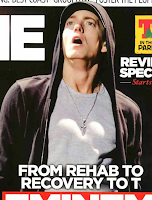Task 2
A typical reader of my magazine
My typical reader is John Smith. He is 19 years old and his hobbies are playing instruments, listening to his favourite pop-punk music and going to concerts with his friends. His favourite films are
- My target audience is aged 16-19. This is because the bands in my magazine will all be made up of young people, which allows my target audience to relate to the bands, and for the younger readers, idolise them.
- My target gender will be males, although I won’t alienate female readers. This is because most Rock bands are made up of young males who can, again, relate to the bands. My female audience will also like these bands but I will focus on males.
- They will be from the C-D demographic. My magazine will be low cost. I will not compromise on quality in my magazine, but I am setting my price lower because I am appealing to a younger audience who will not have as much disposable income to spend on magazines.
- Their hobbies are playing musical instruments, reading music magazines, and going to concerts. These interests will be covered in my magazine, encouraging my audience to buy it.
- Their musical tastes are Pop punk, All spectrums of rock and alternative music. My magazine will reflect these tastes.
- My target audience's fashion style will emulate the bands that appear in my magazine. They will wear the brands Atticus, Macbeth and Famous stars and straps for example. They will wear casual " Rock" attire.
- As my magazine will be lower cost, my target audience could be either employed or unemployed. Both will be able to afford my magazine and the magazine will appeal to them both because of the gritty style and rock look.















